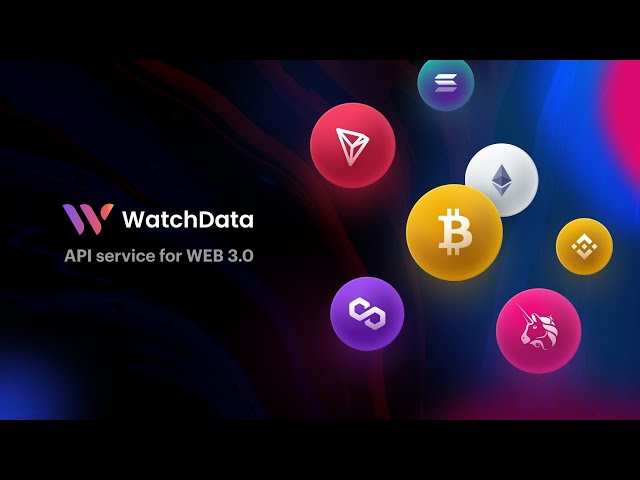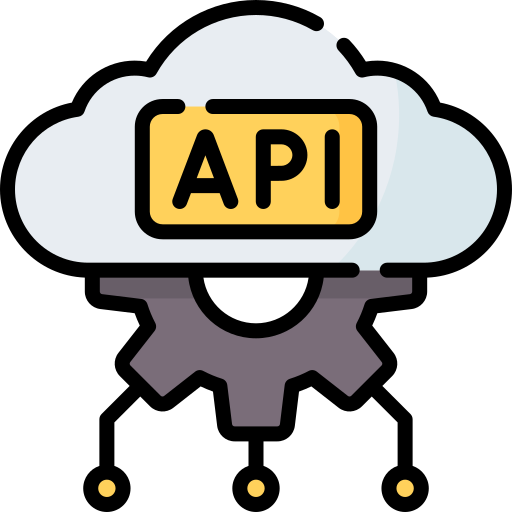In the ever-evolving world of blockchain technology, developers and enthusiasts require robust tools to interact with and analyze blockchain data. Enter WatchData API, a powerful suite designed to simplify access to valuable blockchain information.
This article delves into the functionalities and benefits offered by WatchData API, empowering you to harness the potential of blockchain data:
Unveiling the Raw Power:
- Access to Multiple Blockchains: Unlike some APIs limited to a single blockchain, WatchData boasts support for various blockchains, including industry leaders like Bitcoin and Ethereum. This versatility allows developers to work with a wider range of blockchain applications.
- Raw Data at Your Fingertips: WatchData grants access to the fundamental building blocks of blockchain technology. Users can retrieve data on balances, transactions, blocks, token transfers, and more. This granular access empowers in-depth analysis and application development.
- Unified Interface: Navigating data from multiple blockchains can be cumbersome. WatchData provides a single, unified interface for interacting with all supported blockchains. This streamlines the development process and reduces the learning curve.
Beyond the Basics:
- Effortless Data Conversion: WatchData understands that blockchain data comes in various formats. The API offers built-in functionalities for data conversion, eliminating the need for manual manipulation and saving developers valuable time.
- Unlocking Block Information: Go beyond basic transactions. WatchData allows users to delve deeper by retrieving comprehensive information on individual blocks within the blockchain. This empowers developers to analyze trends and identify patterns.
- Harnessing the Power of Statistics: WatchData doesn’t just provide raw data. The API offers statistical tools, enabling users to gain insights into blockchain activity. Analyze daily transaction volumes, track token transfers, and identify emerging trends within the blockchain ecosystem.
Empowering Developers:
- User-Friendly Approach: WatchData prioritizes accessibility. The API boasts a user-friendly interface and clear documentation, making it suitable for both seasoned developers and those new to blockchain technology.
- Integration Made Easy: Building applications on blockchain data requires seamless integration. WatchData offers various SDKs catering to popular programming languages, allowing developers to effortlessly integrate WatchData’s functionalities into their existing workflows.
The Future of Blockchain Development:
WatchData API positions itself as a valuable asset for developers and businesses venturing into the realm of blockchain technology. By providing comprehensive access to blockchain data, WatchData empowers users to:
- Build innovative blockchain applications
- Conduct in-depth analysis of blockchain activity
- Gain valuable insights into emerging blockchain trends
With its versatility, user-friendly approach, and commitment to developer experience, WatchData API is poised to play a significant role in shaping the future of blockchain development.
Here’s a Python example using the WatchData API to retrieve the latest block information from the Ethereum blockchain:
Python
import requests
# Replace with your actual WatchData API key
api_key = "YOUR_WATCHDATA_API_KEY"
# Endpoint for retrieving the latest Ethereum block
endpoint = "https://api.watchdata.io/v1/blockchains/ethereum/blocks/latest"
# Set headers with your API key
headers = {
"Authorization": f"Bearer {api_key}"
}
try:
# Send a GET request to the API endpoint
response = requests.get(endpoint, headers=headers)
response.raise_for_status() # Raise an exception for unsuccessful requests (optional)
# Parse the JSON response
data = response.json()
# Access and print the latest block information
block_hash = data["hash"]
block_number = data["number"]
timestamp = data["timestamp"]
print(f"Latest Ethereum Block Details:")
print(f" Hash: {block_hash}")
print(f" Block Number: {block_number}")
print(f" Timestamp: {timestamp}")
except requests.exceptions.RequestException as e:
print(f"API request failed: {e}")
Explanation:
- Import requests library: We import the
requestslibrary to make HTTP requests to the WatchData API. - API Key: Replace
YOUR_WATCHDATA_API_KEYwith your actual API key obtained from WatchData. - Endpoint URL: The
endpointvariable stores the URL for retrieving the latest Ethereum block information. - Headers: The
headersdictionary defines the authorization header with your API key. - Sending the Request: We use
requests.getto send a GET request to the specified endpoint with the headers set. - Error Handling: The
try-exceptblock handles potential exceptions during the request. Theraise_for_status()method (optional) raises an exception for unsuccessful requests (status codes outside the 200 range). - Parsing JSON Response: If the request is successful, we parse the JSON response using
response.json(). - Accessing Data: We extract specific data points from the response, such as block hash, block number, and timestamp.
- Printing Results: The code then prints the retrieved information about the latest Ethereum block.
This is a basic example demonstrating how to retrieve and print basic block data. You can modify it further to:
- Extract and process other data available in the response (e.g., transaction details).
- Use the information for further analysis or integrate it into your application.
Remember to consult the WatchData API documentation for a complete understanding of available endpoints and response formats.


